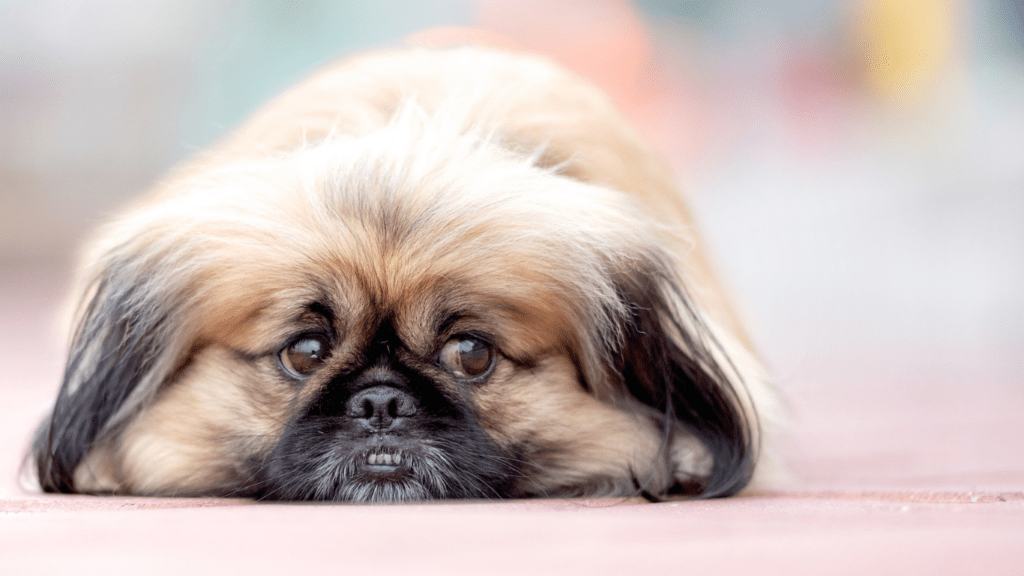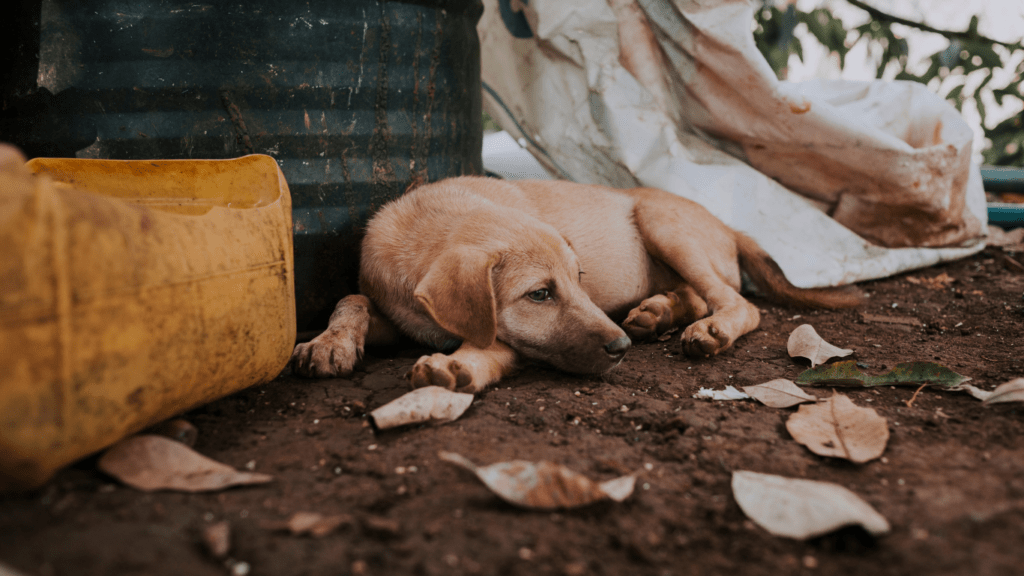Traveling with pets can be a rewarding experience, but it also comes with its challenges, especially when dealing with pet anxiety. As a seasoned pet owner and travel enthusiast, I understand the importance of ensuring our furry companions feel safe and comfortable on the go. In this article, I’ll share my top 10 expert tips for managing pet anxiety during travel, helping you and your pet have a stress-free journey.
From planning ahead and creating a familiar environment to using calming aids and practicing positive reinforcement, these tips are designed to make traveling with your pet a breeze. Whether you’re embarking on a road trip or taking a flight, implementing these strategies can make a significant difference in your pet’s anxiety levels and overall travel experience.
Join me as I guide you through the best practices for keeping your pet calm and happy while on the move.
Understanding Pet Anxiety During Travel
Traveling can be stressful not just for us, but also for our beloved pets. As a pet owner and travel enthusiast, I understand the importance of recognizing and addressing pet anxiety during journeys.
Pets can feel anxious due to various factors such as unfamiliar environments, loud noises, confined spaces, and separation from their owners.
It’s crucial to understand the signs of pet anxiety, which can manifest as pacing, trembling, excessive drooling, whining, or even aggression. By acknowledging these signs, pet owners can take proactive steps to help their furry companions feel more at ease during travel.
Creating a Comfortable Travel Environment
When traveling with your pet, it’s essential to create a comfortable environment to help alleviate any anxiety they may experience. Here are some expert tips to ensure your furry friend feels safe and secure throughout the journey.
Choosing the Right Carrier or Crate
Selecting the appropriate carrier or crate for your pet is crucial in providing a secure and cozy space for them during travel. Ensure that the carrier is spacious enough for your pet to stand, turn around, and lie down comfortably.
Introduce the carrier to your pet before the trip, allowing them to get familiar with it and associate it with positive experiences.
Familiarizing Your Pet with the Travel Routine
Establishing a predictable travel routine can help reduce your pet’s anxiety by creating a sense of familiarity. Practice short trips in the car or the mode of transportation you plan to use for the journey.
Gradually increase the duration of these practice trips to help your pet acclimate to being on the move.
Introducing elements of the travel routine, such as the carrier or crate, feeding schedule, and rest stops, will make the actual journey less stressful for your pet.
Ensuring Safe and Stress-Free Transportation
In ensuring safe and stress-free transportation for pets, I focus on creating a calm and secure environment during travel. Choosing the right carrier or crate plays a crucial role in providing a comfortable space for pets.
Opt for a carrier that allows your pet to stand, turn around, and lie down comfortably.
Ensuring pets are familiar with their travel routine is another key aspect of reducing anxiety during journeys. Introduce your pet to the carrier well before the trip, allowing them to explore and get accustomed to the space.
Establishing a predictable travel routine can help normalize the experience for your pet, making them feel more at ease and secure.
Packing Essential Items for Pet Comfort
When it comes to traveling with pets, ensuring their comfort and well-being is my top priority. One key aspect of managing pet anxiety during travel is packing essential items that cater to their comfort needs. Here are some expert tips on what to include in your pet’s travel kit to help them feel secure and relaxed throughout the journey:
- Comfortable Bedding: Pack your pet’s favorite blanket or bedding to provide them with a familiar scent and a cozy space to rest during the trip.
- Favorite Toys: Bringing along their favorite toys can offer a sense of familiarity and comfort, distracting them and keeping them occupied during travel.
- Food and Water: Maintain your pet’s regular feeding schedule by packing their usual food and bringing along a travel-friendly water dispenser to keep them hydrated.
- Medications and Supplements: If your pet requires any medications or supplements, ensure you have an adequate supply for the duration of the journey.
- Calming Aids: Consider using calming aids such as pheromone sprays or treats to help alleviate stress and anxiety during travel.
- Health and Identification Documents: Keep your pet’s health records, identification tags, and any necessary travel documents readily accessible for emergencies.
- Travel Crate or Carrier: Choose a well-ventilated and appropriately sized crate or carrier that allows your pet to move comfortably but securely during travel.
- Grooming Supplies: Pack grooming items like a brush, nail clippers, and waste bags to maintain your pet’s hygiene and cleanliness on the go.
- First Aid Kit: Be prepared for any minor accidents or health issues by packing a pet-specific first aid kit with essentials like bandages, antiseptic wipes, and tweezers.
- Comforting Items: Include items that provide comfort to your pet, such as a piece of your clothing with your scent or a familiar blanket, to help them feel at ease in unfamiliar surroundings.
By packing these essential items for your pet’s comfort, you can create a stress-free and reassuring travel experience for your furry companion. Remember, a well-prepared travel kit can make all the difference in helping your pet feel safe, secure, and relaxed throughout the journey.
Implementing Calming Techniques
Implementing calming techniques is crucial for managing pet anxiety during travel. It’s essential to use strategies that help alleviate stress and create a serene environment for your pet. Here are some expert tips to effectively implement calming techniques:
- Use Pheromone Sprays: Consider using pheromone sprays that mimic natural pet pheromones to promote a sense of security and reduce anxiety levels. These sprays can be sprayed on your pet’s bedding or crate before and during travel.
- Practice Relaxation Exercises: Before the journey, engage in relaxation exercises with your pet to help them unwind. Gentle massage, soothing music, or calming scents like lavender can help relax your pet and ease travel anxiety.
- Create a Quiet Space: During travel, ensure your pet has a quiet and comfortable space where they can retreat if they feel overwhelmed. Use a familiar blanket or bedding to create a sense of familiarity and security for your pet.
- Establish a Routine: Maintaining a routine can help reduce stress for pets during travel. Stick to regular feeding times, bathroom breaks, and play sessions to provide a sense of normalcy amid the changes in their environment.
- Stay Calm and Positive: Pets can pick up on their owner’s emotions, so it’s essential to stay calm and positive during travel. Your reassurance and calm demeanor can help reassure your pet and alleviate their anxiety.
By implementing these calming techniques, you can help your pet feel more at ease and comfortable during travel. Consistency and patience are key to successfully managing pet anxiety and ensuring a stress-free journey for both you and your furry companion.
Researching Pet-Friendly Accommodations
When it comes to traveling with a pet, finding pet-friendly accommodations is crucial for ensuring a stress-free trip for both you and your furry friend. As an experienced pet traveler, I always prioritize researching and booking pet-friendly accommodations in advance to provide a comfortable and welcoming environment for my pet during our travels.
I recommend starting your research by using reputable websites and apps that specialize in listing pet-friendly hotels, vacation rentals, and other lodging options. These platforms often provide filters to narrow down your search specifically for pet-friendly establishments, making it easier to find suitable accommodations for you and your pet.
Additionally, I suggest reaching out directly to hotels or rental properties to inquire about their pet policies. Ask about any restrictions, fees, or specific amenities they offer for pets. It’s essential to confirm that the accommodation not only allows pets but also caters to their needs to ensure a pleasant stay for both you and your furry companion.
Another valuable tip is to read reviews from other pet owners who have stayed at the accommodation with their pets. These reviews can give you insights into the overall pet-friendliness of the establishment, the level of hospitality extended to pets, and any potential challenges or positive experiences shared by fellow travelers.
By conducting thorough research and choosing pet-friendly accommodations that prioritize the well-being of pets, you can create a relaxing and enjoyable travel experience for you and your furry companion. Remember, a pet-friendly environment plays a significant role in managing pet anxiety during travel and promoting a harmonious journey for both you and your beloved pet.
Prioritizing Regular Breaks and Exercise
Ensuring that your pet gets regular breaks and exercise during travel is vital for managing their anxiety and keeping them calm. I recommend incorporating short breaks during your journey to allow your pet to stretch their legs and have a bathroom break.
It’s essential to consider their comfort and well-being throughout the trip.
I suggest stopping every 2-3 hours to let your pet out of the carrier or crate, especially if you’re traveling long distances. This break will not only give them a chance to relieve themselves but also to move around and release pent-up energy.
It’s crucial to find safe and secure areas for these breaks to prevent any potential escape or accidents.
Additionally, engaging your pet in some physical activity during breaks can help reduce their stress levels. A short game of fetch or a brisk walk can work wonders in calming your pet down and easing their anxiety.
Providing familiar toys or playing their favorite games can also distract them from the unfamiliar surroundings and create a sense of comfort. By prioritizing regular breaks and exercise, you can help your pet stay relaxed and content during travel, ultimately making the journey more enjoyable for both you and your furry friend.
Seeking Professional Guidance When Necessary
When traveling with your pet, it’s essential to understand that some situations may require the expertise of a professional. In cases where your pet’s anxiety is severe or persistent despite implementing various strategies, seeking guidance from a veterinarian or an animal behaviorist would be beneficial.
These professionals can provide tailored advice based on your pet’s specific needs and help address underlying issues contributing to their anxiety.
A veterinarian can assess your pet’s physical health and recommend appropriate medications or supplements to manage anxiety symptoms effectively. They can also offer guidance on strategies to ensure your pet’s well-being during travel, taking into account any existing medical conditions or concerns.
On the other hand, consulting with an animal behaviorist can help you analyze your pet’s behavior patterns, triggers, and responses to stress. By understanding the root causes of your pet’s anxiety, an animal behaviorist can develop a customized behavior modification plan to mitigate anxiety levels and improve your pet’s overall travel experience.
In some cases, professional guidance can make a significant difference in helping your pet cope with travel-related anxiety. By collaborating with experts in the field, you can access specialized knowledge and support to address your pet’s unique needs and promote a positive travel experience for both you and your furry companion.
Acclimating Your Pet to New Environments
When acclimating your pet to new environments, it’s essential to proceed gradually. Start by introducing them to smaller trips or outings to help them adjust.
These short experiences can build their confidence and reduce anxiety before longer journeys.
Introducing your pet to a variety of environments early on can help them adapt better to new surroundings. Exposing them to different sights, sounds, and smells will make them more comfortable when traveling to unfamiliar places.
Offer positive reinforcement during the acclimation process. Rewarding your pet with treats, praise, or playtime in new environments can create positive associations and alleviate stress.
This positive reinforcement helps your pet feel secure and relaxed in different settings.
Create a safe space for your pet in new environments. Whether it’s a cozy corner in a hotel room or a familiar blanket in a friend’s house, having a designated spot will provide comfort and familiarity to your pet. Make sure to bring their favorite bedding or toys to make the space feel like home.
Maintain a consistent routine to help your pet feel at ease in new places. Keep feeding, walking, and playtime schedules consistent to provide a sense of normalcy.
Predictability in their daily routine can reduce stress and anxiety associated with unfamiliar environments. Being patient and supportive during the acclimation process is crucial.
Understand that every pet adapts at their own pace, and some may take longer to feel comfortable in new environments. Stay calm and reassuring to help your pet navigate the transition smoothly.
By following these tips and gradually introducing your pet to new environments, you can help them overcome anxiety and feel more at ease during travel. Remember, patience, positive reinforcement, and consistency are key to acclimating your pet successfully.
Staying Patient and Supportive Throughout the Journey
Embracing a patient and supportive attitude is key to easing pet anxiety during travel. I recommend acknowledging that each pet copes differently with new environments.
By staying calm and maintaining a reassuring demeanor, I can help my furry companion feel more secure throughout the journey. It’s important to understand that pets may exhibit signs of distress, but with my consistent support, I can positively impact their emotional well-being.
Remaining patient during travel challenges is crucial for comforting my pet. Whether facing unexpected delays or adjusting to unfamiliar surroundings, I prioritize staying composed and attentive to my pet’s needs.
By exhibiting patience, I demonstrate to my furry friend that I am a dependable source of comfort and reassurance, fostering a sense of security amidst the uncertainties of travel.
Offering continuous support to my pet throughout the journey reinforces our bond and cultivates a sense of trust. By providing affection, praise, and physical presence, I can significantly reduce my pet’s anxiety levels and promote a feeling of safety.
It’s essential to be there for my pet, offering solace and stability during moments of unease, and creating a strong foundation of support that can help alleviate travel-related stress and anxiety.


 Noranna Frazieral has played a crucial role in shaping the content for Animal Potty Care, focusing on pet diet and wellness. Her deep understanding of pet nutrition ensures that the platform offers well-rounded guidance on maintaining a balanced and healthy diet for pets. Noranna’s contributions help pet owners make informed decisions about their pets' diets, promoting long-term health and well-being. Her input has made the platform a trusted resource for those looking to improve their pets' quality of life.
Noranna Frazieral has played a crucial role in shaping the content for Animal Potty Care, focusing on pet diet and wellness. Her deep understanding of pet nutrition ensures that the platform offers well-rounded guidance on maintaining a balanced and healthy diet for pets. Noranna’s contributions help pet owners make informed decisions about their pets' diets, promoting long-term health and well-being. Her input has made the platform a trusted resource for those looking to improve their pets' quality of life.